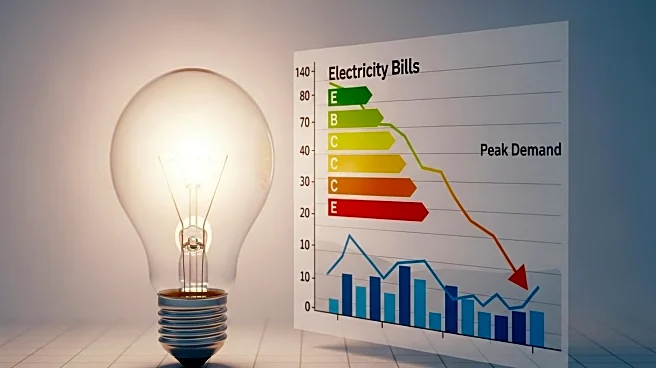What's Happening?
The Acadia Center has released a report detailing the impact of energy efficiency efforts in six New England states and New York. These initiatives are reportedly saving customers billions on utility bills and reducing peak demand on the region's electric grid. The report comes amid federal cuts to energy efficiency investments and rising electricity demand, emphasizing the need for continued energy savings measures. The analysis shows that these states are set to invest nearly $10 billion in efficiency programs, with New England alone expected to generate $19.3 billion in lifetime benefits. The report also calls for improved efficiency data reporting to unlock further savings.
Why It's Important?
Energy efficiency is crucial for reducing electricity costs and demand, especially as federal investment in these programs declines. The Acadia Center's findings highlight the significant economic benefits of energy efficiency, which can help mitigate rising energy prices and reduce reliance on more expensive energy resources. The report underscores the importance of maintaining and expanding these programs to continue delivering substantial savings and environmental benefits. States like Massachusetts and Rhode Island face potential cuts to efficiency budgets, which could result in significant losses in lifetime benefits.
What's Next?
The report recommends that New England states and New York standardize metrics for program measurement and reporting to enhance the effectiveness of energy efficiency initiatives. This alignment could improve the understanding and design of programs, unlocking new opportunities for states to learn from each other and maximize the impact of energy efficiency efforts.
Beyond the Headlines
The report highlights the ethical and environmental dimensions of energy efficiency, emphasizing its role as a low-cost resource that can significantly reduce system costs and environmental impact. The potential cuts to efficiency programs raise concerns about consumer affordability and the long-term sustainability of energy savings measures.











